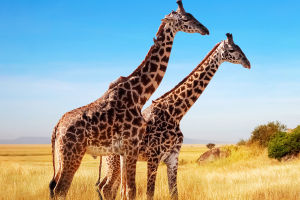Wind power refers to converting the kinetic energy of wind into electrical energy. Wind energy is a kind of clean and pollution-free renewable energy, which has been used for a long time. It is very environmentally friendly to use wind power to generate electricity.
The windmill that generates electricity is called a wind turbine. The principle of wind power generation is to use the wind to drive the blades of the windmill to rotate, and then increase the speed of rotation through the speed increaser to promote the generator to generate electricity. Wind power converts wind energy into mechanical work, which drives the rotor to rotate, and finally outputs alternating current.
Generally, the installation of wind turbines is to select a favorable site according to the situation of wind resources to obtain as much power generation as possible. In addition, the installation and transportation of wind turbines should also be considered in order to reduce the cost of wind power generation as much as possible. The ideal wind turbine site generally has the following conditions.
1. Abundant wind energy resources
The three most important indicators for evaluating the abundance of wind energy resources are the annual average wind speed, the annual average effective wind energy density and the annual effective wind speed hours. The larger these three indicators are, the more abundant the local wind energy resources are.
2. The wind direction is stable
Wind turbines should be installed as far as possible in places where the wind direction is relatively stable and the seasonal changes are relatively small. The stable wind direction can not only increase the utilization rate of wind energy, but also improve the life of the wind rotor. Small changes in wind speed, small changes in site wind speed, and long duration of effective wind speed will reduce the requirements of wind turbine energy storage devices, thereby reducing investment costs.
3. Less natural disasters
The wind turbine installation site should avoid severe areas such as strong wind, ice and snow as much as possible. Strong wind is very destructive to wind turbines, and wind turbines are required to have good wind resistance performance and a solid foundation. After the wind turbine blade freezes, its mass will change significantly, resulting in damage to the wind turbine.
In addition to wind energy, there are many other green energy sources that are ideal energy sources that are not affected by energy shortages, such as hydropower and solar energy. At present, the main problem of these energy development is the high cost of investment and maintenance, so it has not been widely used.
1. Solar energy
Solar power is photovoltaic power generation, which uses the energy of solar radiation to convert it into another kind of energy. This requires a solar-receiving device, the solar panel, which is made of light-sensitive materials. When sunlight hits the panels, the materials in the panels move charges, generating voltage, and electricity from the sun is generated.
2. Water energy
We can raise the water level by building a dam. The higher the water level, the greater the potential energy of the water, and the greater the potential energy, the greater the kinetic energy through the hydroelectric generator. When the water passes through the hydroelectric generator, the water flow is brought to the internal gear of the generator to rotate, and the potential energy is converted into kinetic energy, and then the kinetic energy is converted into electrical energy through the coil manufactured by the principle of electromagnetic induction.
Now many scientists are actively looking for ways to improve the efficiency of the use of renewable energy, and believe that with the shortage of the earth's resources, renewable energy will play a more and more important role.


